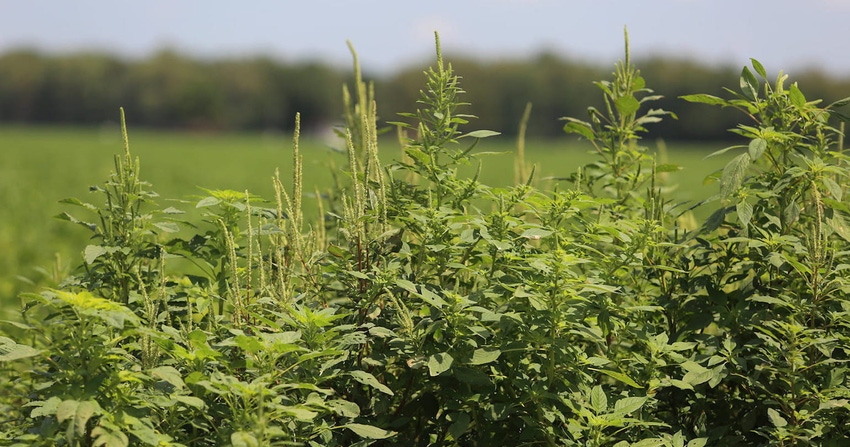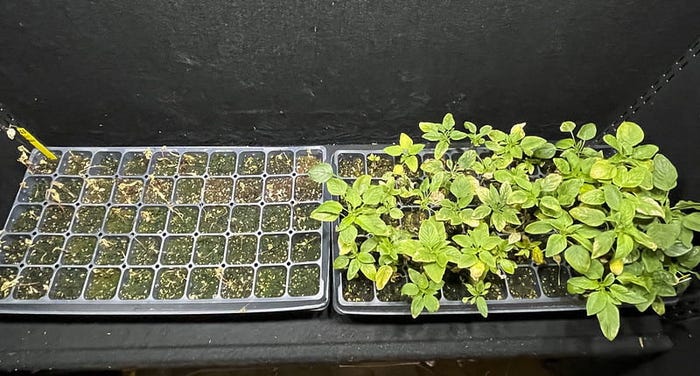
Researchers with the University of Arkansas Division of Agriculture have discovered the world’s first documented strain of glufosinate-resistant Palmer amaranth.
The resistant pigweeds were found last summer on two cotton farms in Mississippi County, located in Northeastern Arkansas. Both growers reported spraying glufosinate multiple times but could not kill pigweeds in isolated spots of the field.
Testing conducted at a university greenhouse laboratory found the field samples to be approximately 15 times more resistant to the herbicide glufosinate than the susceptible standard against which plant herbicides are typically judged for effectiveness. A third sample from a farm in neighboring Crittendon County was also determined to be resistant to glufosinate, which is marketed as Liberty.
“For the past 10-12 years since glyphosate resistance hit our fields on a large scale, many growers have relied heavily on glufosinate for post-emergence weed control, especially in cotton production,” said Tom Barber, Extension weed scientist with the University of Arkansas. “When you put that much selection pressure on a population, it’s not surprising to see resistance occur.”
Not surprising, but definitely disheartening, especially for producers who have seen Palmer amaranth conquer multiple herbicides. Barber says the weed has evolved resistance to now seven different herbicide sites of action — complicating weed control options for producers.
“When I first saw these fields, it reminded me of 2007,” said Barber, referencing the onset of glyphosate resistance in his state. “Glufosinate resistance is not a widespread issue, but it’s likely in more than three fields. Growers need to be aware, even if they don’t think they have a problem.”

Now what?
Since announcing the confirmation of glufosinate resistance, Barber says he’s received numerous calls from producers asking, “What do we do now?”
“I wish I had a silver bullet option, but there’s really not one,” Barber said.
For growers with known glufosinate resistance in their fields, Barber recommends rotating to corn or rice. For those wanting to stick with cotton or soybeans, he suggests moving to an Enlist system, since Enlist One herbicide tankmixed with glufosinate is still consistently controlling pigweeds. Dicamba is an option for post-emergent weed control (the glufosinate-resistant samples did test susceptible to dicamba), although Arkansas growers have a May 25 cut-off date for dicamba applications.
Barber continues to advocate for all growers to apply paraquat (Gramoxone) plus two residual herbicides at planting, such as Cotoran + Caporal or Cotoran + Brake. He also recommends including a Group 15 residual, such as Dual, Outlook or Warrant, in post-emergence applications.
“It’s time to break out the layby rigs again, and maybe even do some early season post-direct applications to add another residual layer of protection in the system,” Barber said. “I think it’s something we can handle, but it’s going to take more intense management knowing we have glufosinate resistance out there.”
Outside of herbicide options, growers should consider incorporating cultural and mechanical strategies into their weed control system. Cover crops, narrow-row spacing and deep tillage can all reduce the number of Palmer amaranth plants that emerge during the year. A focus should be placed on the Palmer amaranth soil seed bank. Growers should physically remove escaped plants from the field or incorporate harvest weed seed control techniques which destroy leftover seed. Narrow windrow burning is currently the best method, but hopefully seed destructors installed in combines will be available soon. All of these practices are currently being evaluated in long-term research projects at the University of Arkansas.
“None of the practices are going to be easy, but we have to avoid overreliance on one method of control,” Barber said.
See Barber’s original announcement on the Arkansas Row Crops Blog.
About the Author(s)
You May Also Like






